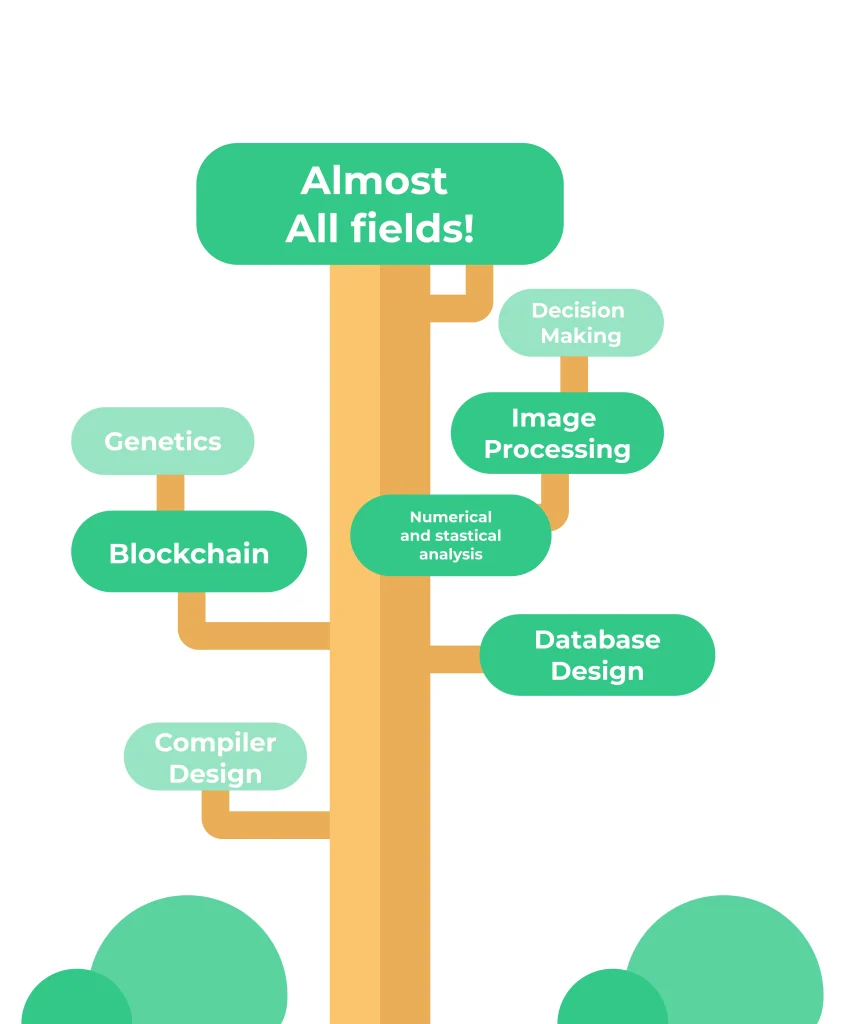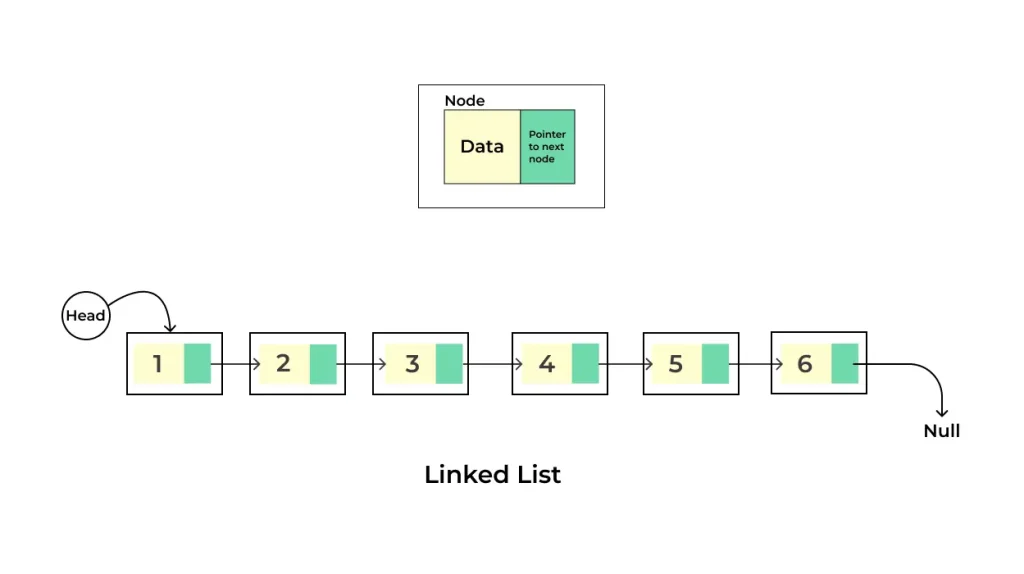Data Structure Interview Questions and Answers
Top 50 Most Asked DSA Interview Questions
Data Structures and Algorithms form the backbone of technical interviews, presenting both challenges and opportunities to showcase your skills. Data Structure Interview A robust understanding of these concepts is paramount for interview success. To assist you in your preparation, we’ve compiled a set of pivotal Data Structures and Algorithms interview questions.
Elevate your readiness for the interview with Prepinsta.
Introduction to Data Structures and Algorithm
An operating system (OS) is the essential software that manages your computer’s hardware and software resources, ensuring they work together seamlessly. It’s like the conductor of a digital orchestra, making your device perform efficiently.
Data Structure Interview Questions and Answers for Freshers
Ques 1: What is data structure?
Ans.
A data structure is a named location that can be used to store and organize data. And, an algorithm is a collection of steps to solve a particular problem. Learning data structures and algorithms allow us to write efficient and optimized computer programs. For example, we can store a list of items having the same data type using the array data structure.
Also Check Out:-
Prime Course Trailer
Ques 2: Describe types of Data Structures?

Ans.
Data structures can be broadly categorized into two main types based on their organization and representation: linear and nonlinear (or hierarchical).
1.Linear Data Structures:
- Arrays: Elements are stored in contiguous memory locations, and each element is accessed using an index.
- Linked Lists: Elements are stored in nodes, and each node points to the next one in the sequence.
- Stacks: Follows the Last In, First Out (LIFO) principle; elements are added and removed from the same end.
- Queues: Follows the First In, First Out (FIFO) principle; elements are added at the rear and removed from the front.
- In linear data structures, elements are arranged in a sequential order, and traversal can occur in a single, linear path.
2.Nonlinear Data Structures:
- Trees: Hierarchical data structures with a root node and branches, forming a tree-like structure.
- Binary Trees: Each node has at most two children.
- AVL Trees, Red-Black Trees: Variations of binary trees with balance conditions.
- Graphs: A collection of nodes connected by edges, allowing for more complex relationships.
- Directed Graphs, Undirected Graphs: Edges may have a directionality or not.
Ques 3: Which data structure is used to perform recursion?
Ans.
Stack is used in recursion because of its Last In First Out(LIFO) nature. Operating System maintains a stack in order to store the values of each iteration.
Ques 4: In what areas do data structures are applied?

Ans.
Data structures are needed in almost every situation involving data. Algorithms involving efficient data structures are used in a variety of fields, including numerical analysis, operating systems, artificial intelligence, compiler design, database management, graphics, and statistical analysis, to name a few.
Ques 5: What is Stack?

Ans.
Stack is a linear data structure that follows a particular order in which the operations are performed. The order may be LIFO(Last In First Out) or FILO(First In Last Out). The Stack is a list in which, insertion and deletion can be performed only at one end that is called the top. It is a recursive data structure having a pointer to its top element. Last-In-First-Out (LIFO) means the element which is inserted first will be deleted last from the stack.
Related Banners
Get PrepInsta Prime & get Access to all 200+ courses offered by PrepInsta in One Subscription
Data Structure Interview Questions
Ques 6: Write the stack conditions.
Ans.
Overflow Condition : top = MaxSize – 1
Underflow Condition : top = MinSize – 1
Ques 7: Briefly explain the approaches to develop algorithms?
Ans.
There are three major approaches to develop algorithms −
- Greedy Approach − creating a solution by choosing the next best possible option
- Divide and Conquer − diving the problem to a minimum possible sub-problem and solving them independently.
- Dynamic Programming − diving the problem to a minimum possible sub-problem and solving them combinedly.
Ques 8: What is a linked list?

Ans.
A linked list is a linear data structure, in which the elements are not stored at contiguous memory locations. The elements in a linked list are linked using pointers. This forms a chain-like link for data storage.
Ques 9: What is a postfix expression?
Ans.
An expression in which operators follow the operands is known as postfix expression. The main benefit of this form is that there is no need to group sub-expressions in parentheses or to consider operator precedence.The expression “a + b” will be represented as “ab+” in postfix notation.
Ques 10: What is the difference between PUSH and POP?
Ans.
PUSH and POP are storage and retrieval operations for data in the stack.
- PUSH: specifies that data is “inserted” into the stack.
- POP: specifies data retrieval. It means that data is being removed from the stac
Data Structure Interview Questions for Freshers
Ques 11: What is binary search?
Ans.
Binary search is an efficient algorithm for finding an item from a sorted list of items. It works by repeatedly dividing in half the portion of the list that could contain the item until you’ve narrowed down the possible locations to just one. This search first compares the target value to the mid of the list. If it is not found, then it decides on whether.
Ques 12: How do you reference all the elements in a one-dimension array?
Ans.
We can reference all the elements in a one-dimension array using an indexed loop. The counter runs from 0 to the maximum array size, say n, minus one. All elements of the one-dimension array are referenced in sequence by using the loop counter as the array subscript.
Ques 13: What is a queue? How is it different from a stack?
Ans.
A queue is another common data structure that places elements in a sequence, similar to a stack. A queue uses the FIFO method (First In First Out), by which the first element that is enqueued will be the first one to be dequeued.In a stack, the item that is most recently added is removed first. Contrary to this, the item least recently added is removed first in case of a queue.
Ques 14: How does quicksort works?
Ans.
Quick Sort is a sorting algorithm, which is commonly used in computer science. Quicksort is a divide and conquer algorithm. It creates two empty arrays to hold elements less than the pivot value and elements greater than the pivot value, and then recursively sort the sub-arrays. There are two basic operations in the algorithm, swapping items in place and partitioning a section of the array. Quicksort uses the divide and conquer approach. It divides the list into smaller partitions using ‘pivot’. The values which are smaller than the pivot are arranged in the left partition and greater values are arranged in the right partition. Each partition is recursively sorted using quicksort.
Ques 15: How does dynamic memory allocation help in managing data?
Ans.
Aside from being able to store simple structured data types, dynamic memory allocation can combine separately allocated structured blocks to form composite structures that expand and contract as needed.
Data Structure Questions for Interview
Ques 16: What is Data abstraction?
Ans.
Data abstraction is the reduction of a particular body of data to a simplified representation of the whole. Data abstraction is a powerful tool for breaking down complex data problems into manageable chunks. Abstraction, in general, is the process of taking away or removing characteristics from something to reduce them to a set of essential characteristics. As in abstract art, the representation is likely to be one potential abstraction of several possibilities. This is applied by initially specifying the data objects involved and the operations to be performed on these data objects without being overly concerned with how the data objects will be represented and stored in memory.
Ques 17: How will you insert a new item in a binary search tree?
Ans.
As binary search tree doesn’t allow for duplicates, the new item to be inserted must be unique. Assuming it is, we will proceed with checking whether the tree is empty or not. If it is empty, then the new item will be inserted in the root node.
Ques 18: What do you understand by an AVL tree?
Ans.
AVL tree is a self-balancing Binary Search Tree (BST) where the difference between heights of left and right subtrees cannot be more than one for all nodes. The measure of the balance is given by the difference of the heights of the subtrees from the root node of the AVL tree.
Ques 19 :Explain the Linked List and its various types.
Ans.
Linked lists are of many different types. They are as follows:
- Singly Linked List – Every node stores the address or reference of the next node in the linked list, leaving for the last node that stores NULL.
- Doubly Linked List – Every node keeps two references. One point to the next node and the other points to the previous node.
- Circular Linked List – In this type of linked list, all nodes are connected to form a circle. Hence, there is no NULL at the end. A circular linked list can either be a singly circular linked list or a double circular linked list.
Ques 20: When is binary search best applied?
Ans.
A binary search is an algorithm that is best applied to search a list when the elements are already in order or sorted. The list is searched starting in the middle, such that if that middle value is not the target search key, it will check to see if it will continue the search on the lower half of the list or the higher half. The split and search will then continue in the same manner.
Data Structure Interview Questions and Answers
Ques 21: What is bubble sort and how bubble sort works?
Ans.
Bubble Sort is the simplest sorting algorithm that works by repeatedly swapping the adjacent elements if they are in the wrong order. Bubble sort is a comparison-based algorithm in which each pair of adjacent elements is compared and elements are swapped if they are not in order. It is not suitable for a large set of data because the time complexity is Ο(n²).
Ques 22:Which data structures are applied when dealing with a recursive function?
Ans.
Recursion, is a function that calls itself based on a terminating condition, makes use of the stack. Because of its LIFO (Last In First Out) property, it remembers its ‘caller’ so knows whom to return when the function has to return. Recursion makes use of the system stack for storing the return addresses of the function calls.
Ques 23: What is LIFO?
Ans.
LIFO is a short form of Last In First Out. It refers to how data is accessed, stored, and retrieved. A data type that uses LIFO has data that was stored last should be the one to be extracted first. Thus all the other data that was stored before this first data must first be retrieved and extracted.
Ques 24:What is FIFO?
Ans.
FIFO means First-in First-out and is a way that defines how the data within the data structure will be accessed. Mainly followed in QUEUE. Data has been inserted into the queue list the longest is the one that is removed first.
Ques 25: Differentiate NULL and VOID.
Ans.
Null means nothing for data types. Void means function returned type have to be nothing. you also can not return null from a void function. A variable that is given a Null value simply indicates an empty value.
Data Structure Interview Questions with Answers
Ques 26: What is the advantage of the heap over a stack?
Ans.
Heap is more flexible than stack because memory space for the heap can be dynamically allocated and de-allocated as per the requirements.
Ques 27: How do signed and unsigned numbers affect memory?
Ans.
B tree of order m contains all the properties of an M way tree. In addition, it contains the following properties.
- In a B-Tree, each node has a maximum of m children.
- Except for the root and leaf nodes, every node in a B-Tree has at least m/2 children.
- There must be at least two root nodes.
- The level of all leaf nodes must be the same.
Ques 28: Write a recursive C function to calculate the height of a binary tree.
Ans.
int countHeight(struct node* t){
int l,r;
if(!t)
return 0;
if((!(t->left)) && (!(t->right)))
return 0;
l=countHeight(t->left);
r=countHeight(t->right);
return (1+((l>r)?l:r));
}
Ques 29: Write the recursive C function to count the number of nodes present in a binary tree.
Ans.
int count (struct node* t){
if(t){
int l, r;
l = count(t->left);
r=count(t->right);
return (1+l+r);
}
else{
return 0;
}
}
Ques 30: What is the minimum number of queues that can be used to implement a priority queue?
Ans.
It is enough to create two queues. The data elements are stored in one queue, while the priorities are stored in another.
Data Structures and Algorithm Interview Questions and Answers
Ques 31: If you are using C language to implement the heterogeneous linked list, what pointer type should be used?
Ans.
Since the heterogeneous linked list includes various data types, ordinary pointers cannot be used. You must use a generic pointer type like a void pointer for this purpose, as the void pointer may store a pointer to any type.
Ques 32: List some applications of queue data structure.
Ans.
The following are some examples of queue applications.Queues are often used to create waiting lists for a single shared resource, such as a printer, disc, or CPU.
- Pipes, file IO, and sockets all use queues for asynchronous data transfer (where data is not transmitted at the same rate between two processes).
- Many applications, such as MP3 media players and CD players, use queues as buffers.
- Queues are used in media players to keep track of the playlist and add and delete songs from it.
- In operating systems, queues are used to handle interruptions.
Ques 33: Can we apply a Binary search algorithm to a sorted Linked list?
Ans.
No, we can’t use the binary search algorithm on a sorted linked list because it’s difficult to find the index of the middle variable.
Ques 34: When can you tell that a Memory Leak will occur?
Ans.
A memory leak occurs when a program fails to free a dynamically allocated block of memory.
Ques 35:What are the differences between the B tree and the B+ tree?
Ans.
B Tree:
- Search keys can’t be saved more than once.
- Data can be stored in both internal and leaf nodes.
- Since data can be found on both internal and leaf nodes, searching for certain information takes longer.
- Internal node deletion is extremely difficult and time-consuming.
- It is not possible to link leaf nodes.
B+ Tree:
- It’s possible to have multiple search keys.
- The leaf nodes are the only places where data can be saved.
- Since data can only be found on the leaf nodes, searching is comparatively faster.
- Since elements are always removed from the leaf nodes, deletion will never be a complicated method.
- To make search operations more effective, leaf nodes are linked together.
Ques 36: What are the advantages of Selection Sort?
Ans.
Advantages:
It is quick and straightforward to enforce.
It’s suitable for small data sets.
It’s 60% more effective than bubble sorting.
Ques 37: What is a doubly-linked list?
Ans.
A doubly linked list is a more complicated form of a linked list in which each node has a pointer to both the previous and next node in the chain. A node in a doubly-linked list is made up of three parts:
- node data.
- pointer to the next node in sequence (next pointer).
- pointer to the previous node (previous pointer).
Ques 38: Are linked lists considered linear or non-linear data structures?
Ans.
Depending on the case, a connected list may be called both a linear and non-linear data structure.
- It is classified as a non-linear data structure based on data storage.
- It is classified as a linear data structure based on the access strategy.
Ques 39: Which notations are used in the Evaluation of Arithmetic Expressions using prefix and postfix forms?
Ans.
Polish and Reverse Polish notations.
Ques 40: How to reference all the elements in a one-dimension array?
Ans.
It is possible to accomplish this using an indexed loop with a counter that runs from 0 to the array size minus one. By using the loop counter as the array subscript, you can refer to all of the elements in order.
Data Structure Interview
Ques 41: In what areas do data structures are applied?
Ans.
Data structures are needed in almost every situation involving data. Algorithms involving efficient data structures are used in a variety of fields, including numerical analysis, operating systems, artificial intelligence, compiler design, database management, graphics, and statistical analysis, to name a few.
Ques 42: Explain the difference between an Array and a Linked List.
Ans.
An array stores elements in contiguous memory, while a linked list uses nodes with pointers to connect elements in a non-contiguous manner.
Ques 43: What is a Queue?
Ans.
A queue is a data structure that follows the First In, First Out (FIFO) principle, where elements are added at the rear and removed from the front.
Ques 44: Explain the concept of Big O notation.
Ans.
Big O notation represents the upper bound of the algorithm’s time complexity in the worst-case scenario, providing an asymptotic upper limit on the growth rate.
Ques 45: What is the difference between BFS and DFS?
Ans.
BFS (Breadth-First Search) explores nodes level by level, while DFS (Depth-First Search) explores as far as possible along each branch before backtracking.
Ques 46: What is a Hash Table?
Ans.
A hash table is a data structure that maps keys to values using a hash function to compute an index into an array of buckets or slots.
Ques 47: Explain the concept of dynamic programming.
Ans.
Dynamic programming is a method for solving complex problems by breaking them down into simpler, overlapping subproblems and solving each subproblem only once, storing the solutions for reuse.
Ques48: What is the difference between a binary tree and a binary search tree (BST)?
Ans.
In a BST, the left subtree of a node contains only nodes with values less than the node’s value, and the right subtree contains only nodes with values greater than the node’s value.
Ques 49: What is recursion? Provide an example.
Ans.
Recursion is a programming concept where a function calls itself. Example: factorial(n) = n * factorial(n-1).
Ques 50: Explain the concept of a linked list cycle.
Ans.
A linked list cycle occurs when a node in a linked list points to a previous node in the list, creating a loop. Detecting cycles is a common problem in linked list manipulation.
Also Check:-
- C++ Technical Interview Questions
- OOPS Technical Interview Questions
- C Technical Interview Questions
- JAVA Technical Interview Questions
- Python Technical Interview Questions
- DSA Technical Interview Questions
- DBMS Technical Interview Questions
- Software Engineering Question
- DSA Technical Interview Questions For Freshers
- Github Technical Interview Questions
- SQL Technical Interview Questions
- Most Asked Coding Question
Join Our Interview Course Now to Get Yourself Prepared -
Join Our Interview Course Now to Get Yourself Prepared
Prepare for the interview process in both Service and Product Based companies along with Group Discussion, Puzzles, Resume Building, HR, MR and Technical Interviews.






Login/Signup to comment